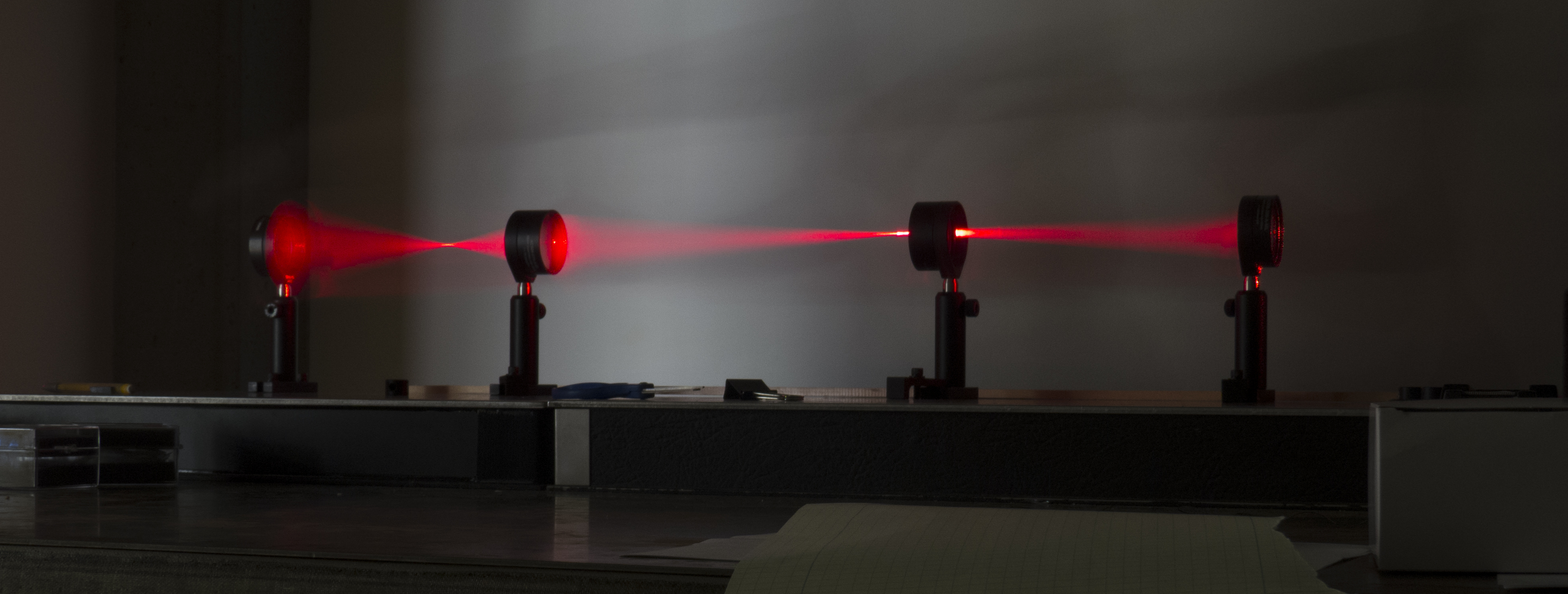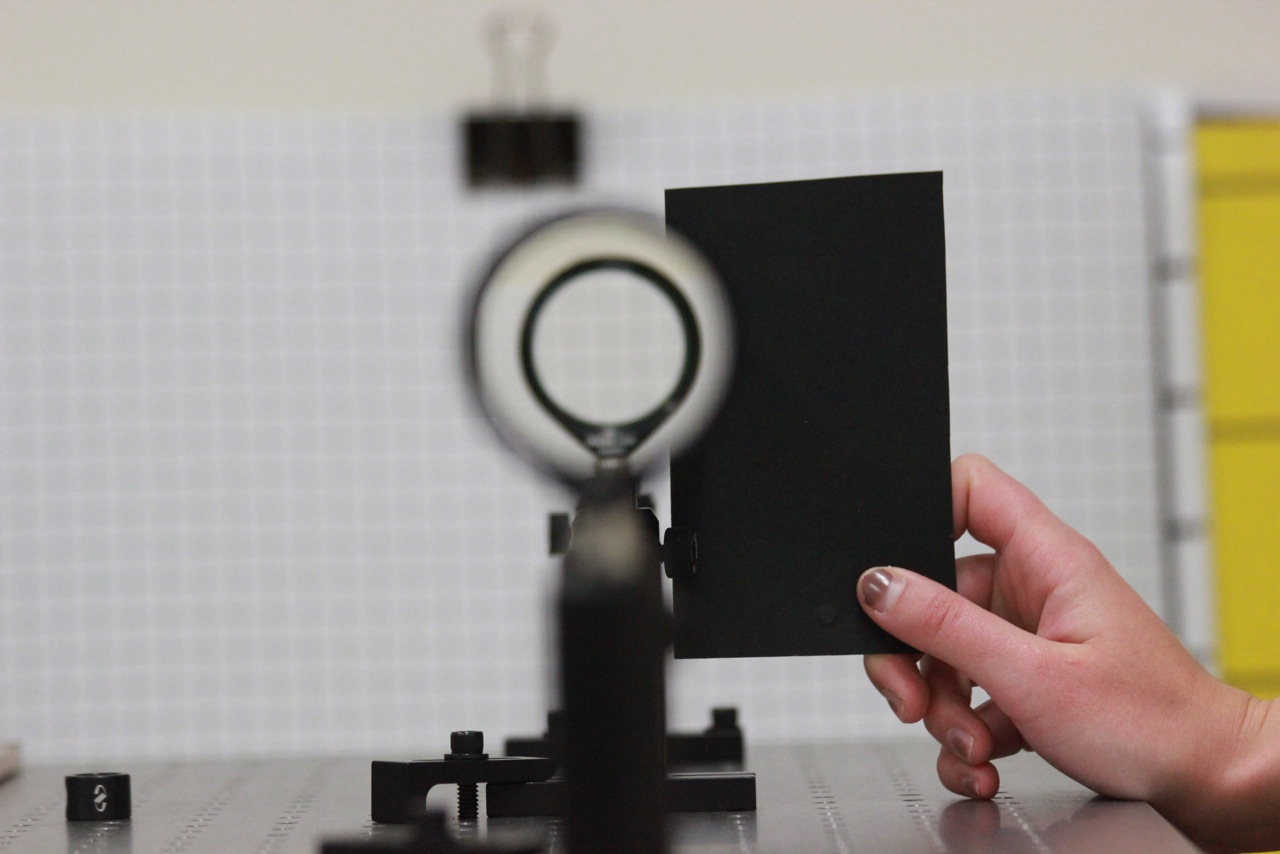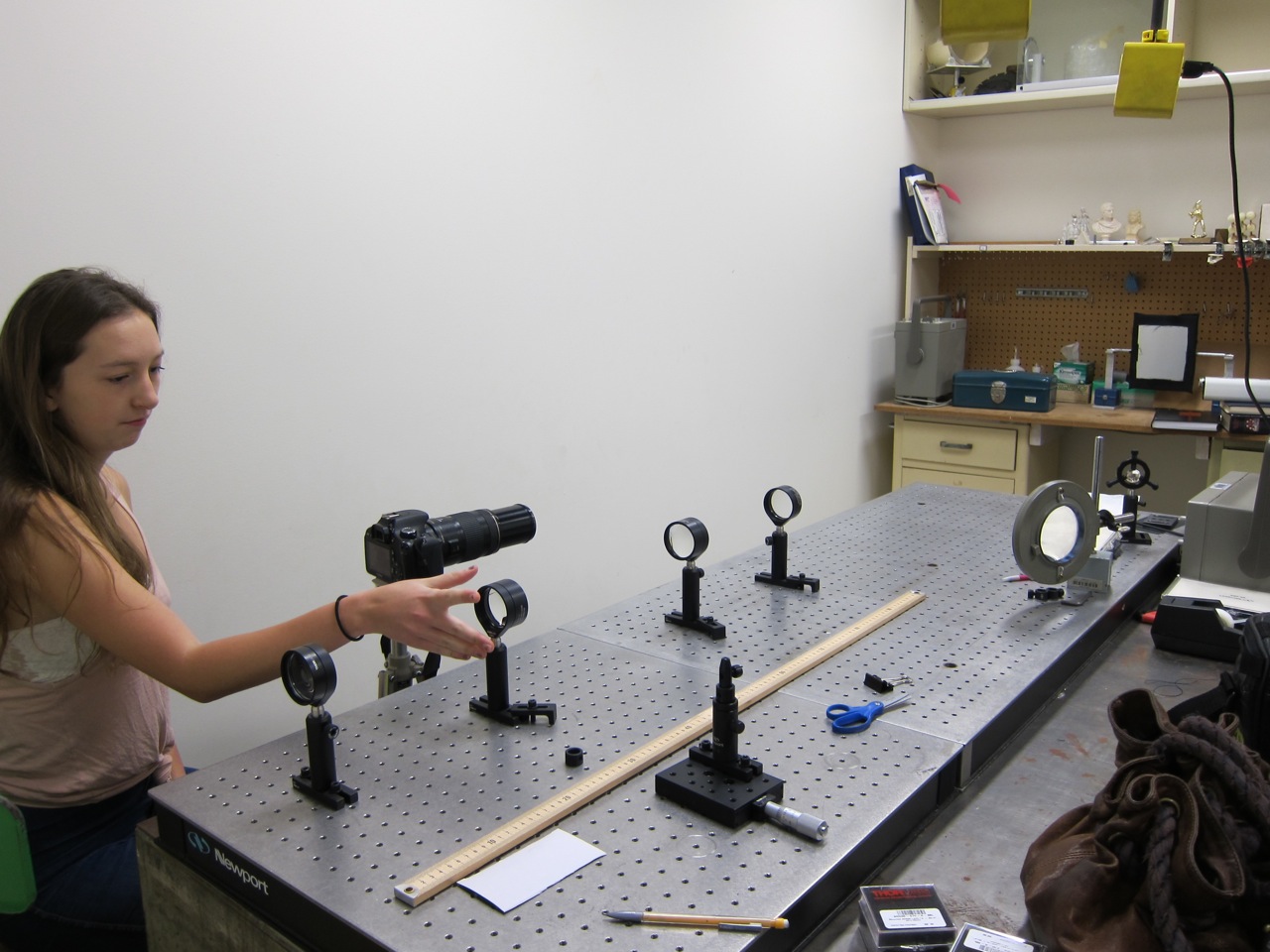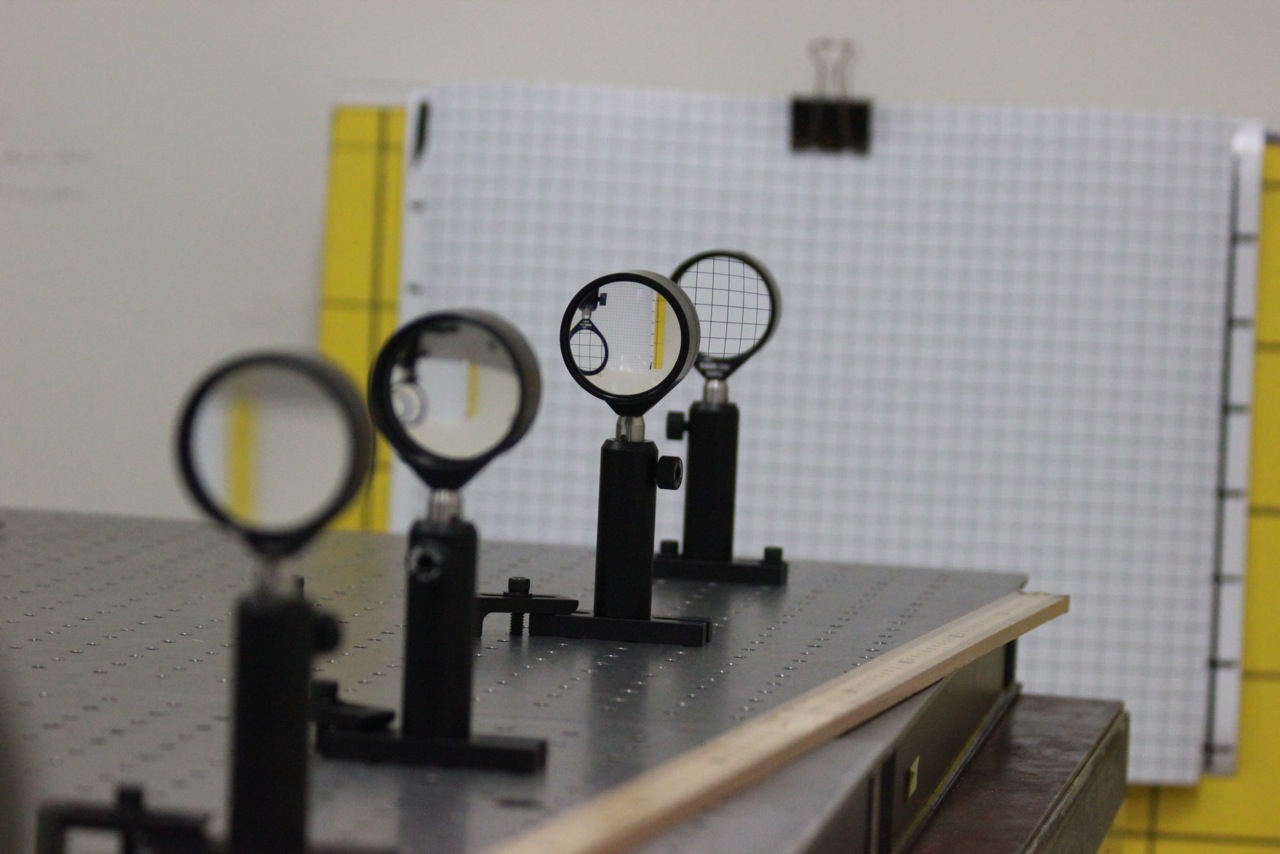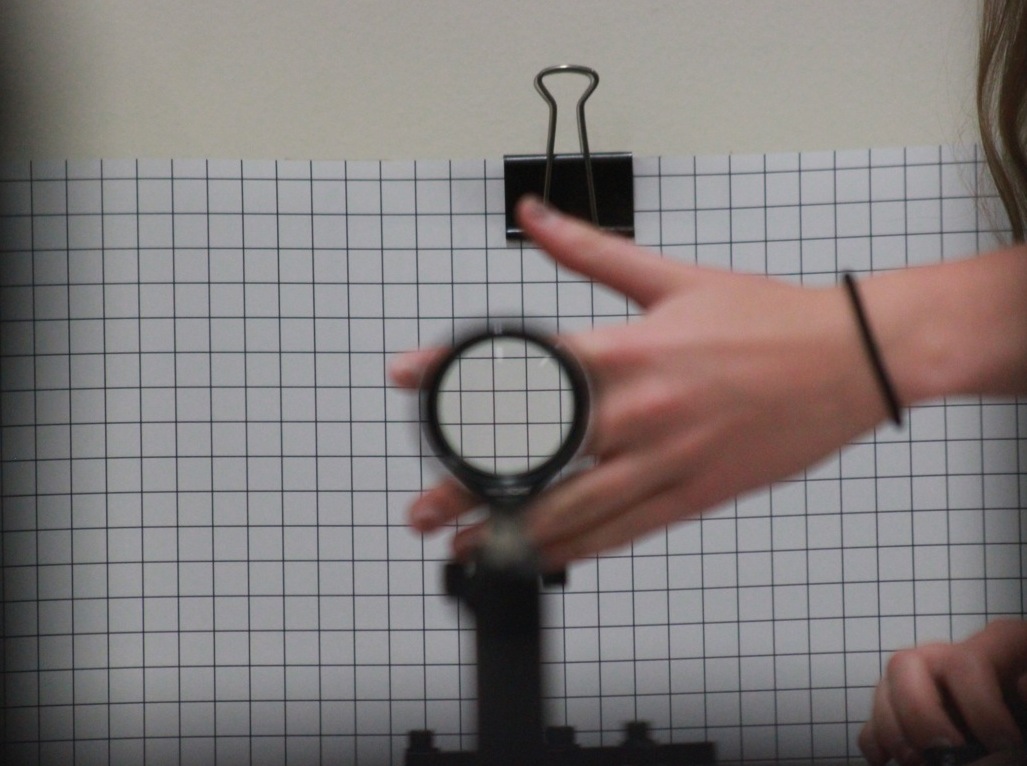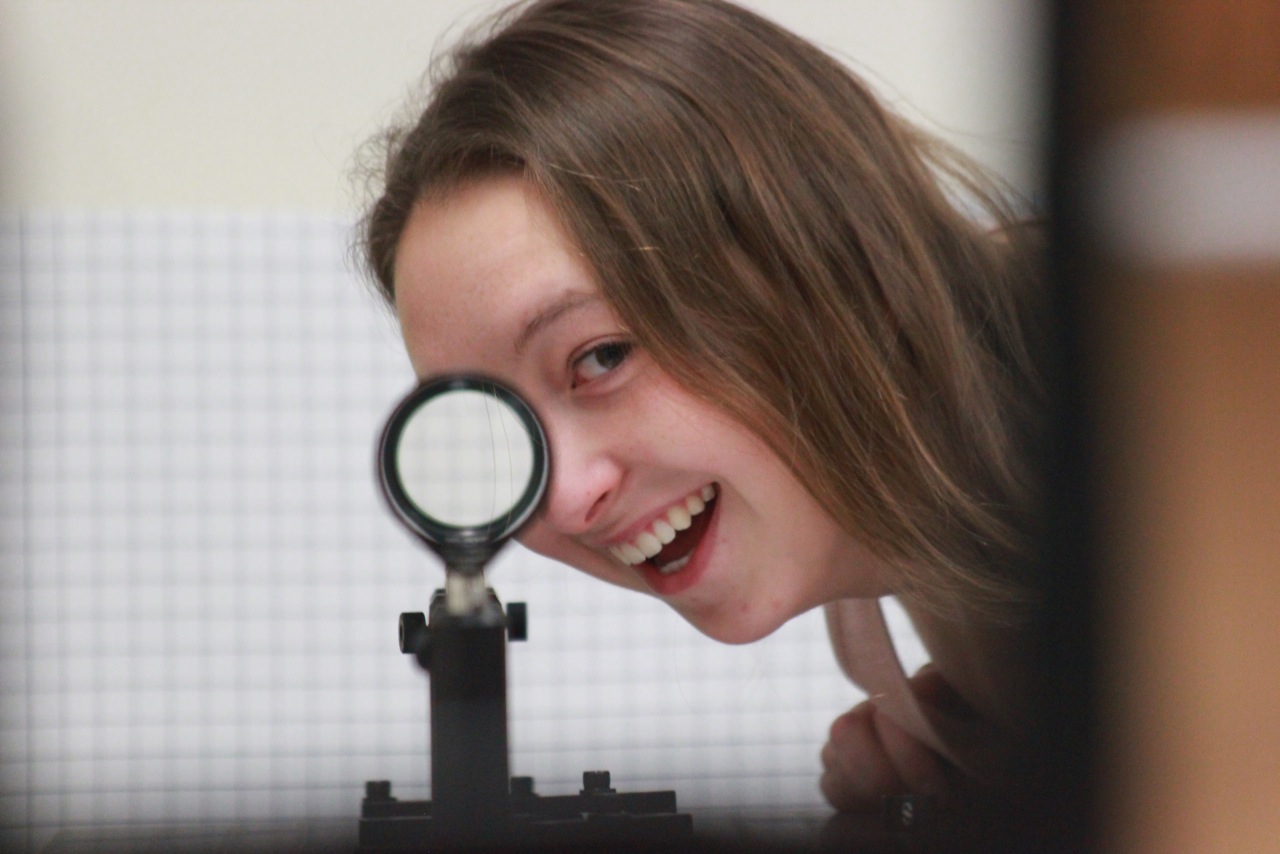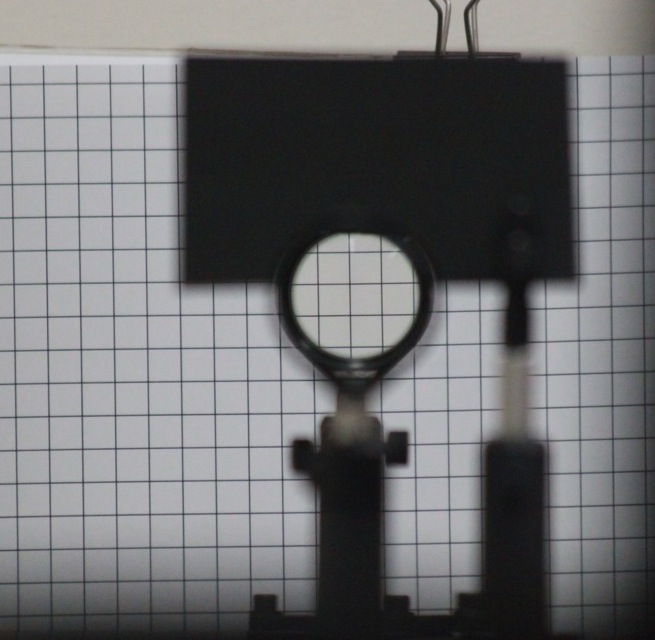Project Description
This cloak was originally designed by Joseph S. Choi and John C. Howell at the University of Rochester using ‘off-the-shelf’ optics [1]. The most important aspect of their design was the definition of a perfect cloak that they used to measure whether the cloak was successful or not. Their definition states that the cloak should have volume and the light rays exiting the cloak that reach our eyes meet them in the same way as if they had traveled through the ambient medium. The theory behind the cloak relies on small angle and thin lens approximations. These two approximations simplify the matrix equations that describe the light rays traveling through the cloak but limit the range of angles where the cloaking is effective. The purpose of this project was to create a perfect paraxial cloak and to replicate the results achieved by Howell and Choi. We created two cloaks during this project, the three-lens prototype and the final four-lens setup. The three-lens cloak is not successful in achieving perfect cloaking however the four-lens system does achieve our original goal and satisfies the definition of a perfect cloak.
[1] Joseph S. Choi and John C. Howell, “Paraxial ray optics cloaking,” Optics Express 22, 29465 (2014).
